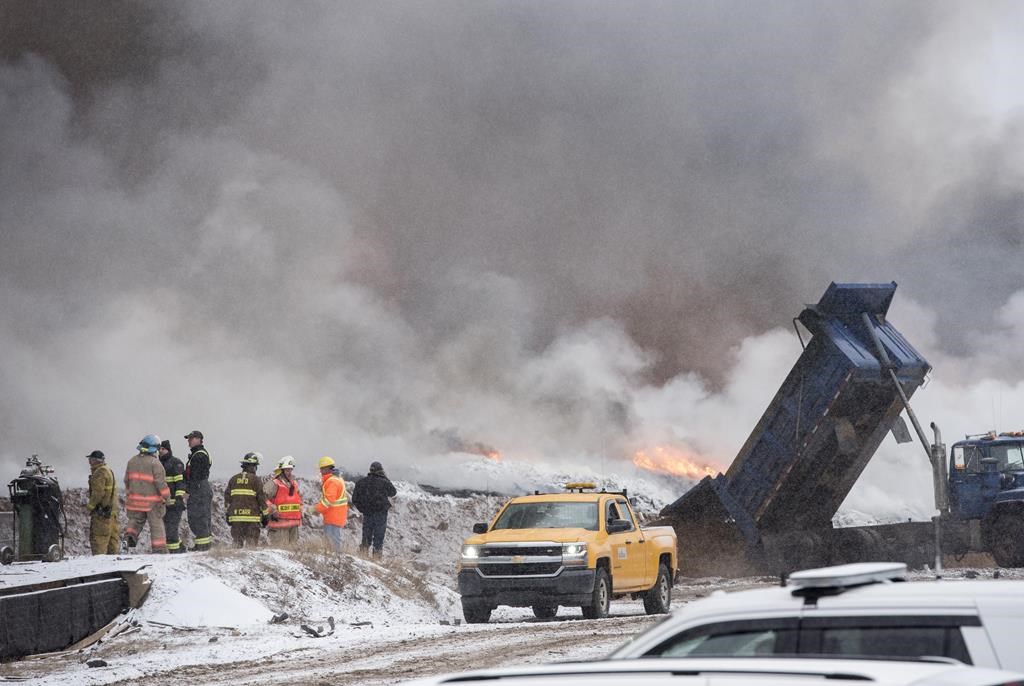New Brunswick has ended a water advisory for residents of the Minto industrial park, nearly a month after it was issued in the wake of a tire fire in the area.

The fire at the TRACC Tire facility broke out early on the morning of Dec. 1, 2019, with initial firefighting efforts involving up to 21 different fire departments from around the province.
At its height, the blaze created a plume of smoke visible from Fredericton — about 50 kilometres away.
READ MORE: Minto tire fire covered with sand as air quality and water advisories remain in effect
The fire was finally smothered as crews finished dumping sand on the smouldering pile of tires Dec. 27, but a water advisory has remained in place until now.
According to residents, the water advisory forced them to purchase their water from grocery stores in the region.
But the province now says the tap water is safe to use.
“At this time, there is no evidence of contamination of drinking water from the recent tire fire in Minto,” said Dr. Na-Koshie Lamptey, regional medical officer of health.
“Enhanced monitoring plans to continue the assessment of any potential health risks from this incident are under development.”

Provincial officials say they continue to review shallow groundwater in the area, adding that a shallow groundwater monitoring plan will inform the province of any movement of chemicals from the site of the fire before it reaches any wells used for drinking water.




Comments